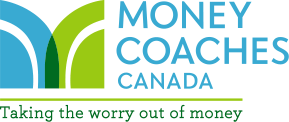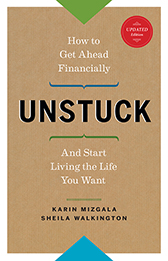 Tis the season—of retirement planning! With the RRSP contribution deadline on March 1st and tax season only a hop, skip and jump away, Canadians are thinking about their long term financial future. Retirement plans are as unique as each of us, and everyone’s vision of the perfect retirement looks different. With the financial services available nowadays, options can feel endless. When thinking about your RRSPs this year, here are three important factors to take into account:
Tis the season—of retirement planning! With the RRSP contribution deadline on March 1st and tax season only a hop, skip and jump away, Canadians are thinking about their long term financial future. Retirement plans are as unique as each of us, and everyone’s vision of the perfect retirement looks different. With the financial services available nowadays, options can feel endless. When thinking about your RRSPs this year, here are three important factors to take into account:
Consider your retirement goals
As we slide into our third pandemic year, Canadians are acutely aware how life-altering events can arrive out of nowhere and shake up our lives. Plans we had for our retirement may have changed significantly or been pushed back indefinitely.
But even without a pandemic, it’s wise to periodically check in with yourself to see if even your rough retirement plan still makes sense for you. What may have seemed like an excellent idea four years ago may not feel right today. Put some thought into your lifestyle, personal values and what financial comfort looks like for you in the future.
An excellent starting point to get the mental juices flowing is thinking about your basic financial priorities.
Are you intent on retiring early, or are you willing to work a bit longer if it means greater financial security or a higher standard of living during retirement?
Are you more interested in being able to maximize your retirement spending with the goal of “dying broke”, or do you want to leave a specific bequest to your children or charitable cause that’s important to you?
Are you still carrying a significant debt load and wondering whether it makes sense to tackle that first?
These and other considerations will affect your retirement savings choices, including how much you save and in what type of account (RRSP, TFSA, non-registered) you save and invest.
Strategize your retirement drawdown plan
We spend most of our working lives shoveling money into our retirement savings accounts, often without much thought given to the implications when we have to start pulling that money out after retirement.
It’s wise to hit pause and confirm that maxing out your RRSP is still the right move for you. It’s possible to retire with too much RRSP (wait… WHAT??) and get hit with a higher tax rate than you might have anticipated. It may be prudent to start withdrawing from RRSPs earlier.
Should you value a simpler, low-cost lifestyle, have a pension entitlement or anticipate an inheritance; your need to accumulate savings could be much less. Your year-by-year income tax could also be correspondingly less.
Everyone’s vision of “enough” money to comfortably retire is different, and some Canadians could even run out of their retirement savings without proper planning. Strategizing the right drawdown plan for your lifestyle can take into account your planned retirement age, reliability of your income sources, specific retirement and estate goals, changes in activity level or health through the years, and maximizing government benefits like Canada Pension Plan (CPP) and Old Age Security (OAS).
An appropriate drawdown strategy could result in thousands of dollars more available to you annually during retirement
Read the fine print before retiring abroad
For over two years travel restrictions have changed seemingly overnight and left many plans up in the air. But at some point, things will get back to normal, and traveling – and even retiring – abroad won’t be the headache it is today.
I won’t argue with warm weather and year round golf, but anyone considering a move outside the country is urged to carefully review the implications for their healthcare, tax, and pension situation. Remaining outside Canada for extended periods can impact health coverage, income and capital gains tax, and OAS and CPP payments. Payments from RRSPs and RRIFs are also affected due to different withholding tax requirements for non-residents of Canada.
Since everyone’s circumstances are unique, work with a professional to ensure you’ve taken all the relevant details into account before retiring outside Canada. Getting slapped with a huge tax bill or losing a chunk of your hard-earned pension can be a real downer when you’re relaxing in the sun.
Curious how many poolside Mai Tais you can afford during your retirement? Talk to a Money Coach today.



One of our readers recently asked a question related to an earlier RRSP article written by Tom Feigs. We thought it would be worthwhile to share the question.
Greetings Tom! I’ve just read your excellent April 12, 2017 “Money Coaches” article, “How Do I Take Money From My RSP in Retirement?” and hope you could please clarify one statement for me regarding withdrawing from your RSP before you’re required to do so, if you’ll be in a high tax bracket in your later years. Would you just pull it out of the RSP before conversion?
Or would you first RIF/annuitize the RSP (before age 71) and then access the former RSP funds from the RIF/annuity? Thank you so much for the clarification as I stumble through this asset decumulation strategy!
Thank you for the question. The original blog was posted 5 years ago and relates to the one posted here more recently.
The RRSP rules are designed to motivate savings during your working years and then encourage withdrawals from these savings during retirement.
An RRSP must be converted to a RRIF (required minimum withdrawals) by the year you reach age 71. The RRIF withdrawals are considered pension income after age 65 which allows the splitting of tax attribution between spouses which could lower combined tax – this may provide incentive to convert to a RRIF sooner. RRIF = Registered Retirement Income Fund.
If you have accumulated a substantial amount of RRSP savings, you may wish to start withdrawals before age 71. Smaller withdrawals over more years could reduce how much tax you pay over the long run.
A retiree can choose to draw from their RRSP in earlier years (before age 71) or go ahead and convert their account to a RRIF and settle into a regular draw (that starts before age 71). Be aware that there is no going back once the RRSP is converted to a RRIF.
Upon considering when to convert your RRSP to RRIF, ask yourself:
“Do I need some year-to-year flexibility on how much is drawn from my RRSP?”, or
“Am I settling into a regular withdrawal stream for the long term?”.
Also, ask your investment advisor about fees. There may be additional transaction fees that are associated with RRSP withdrawals that you would not pay for a regular RRIF withdrawal stream.
All personal circumstances are different. If you need additional support, please contact one of our Money Coaches today.